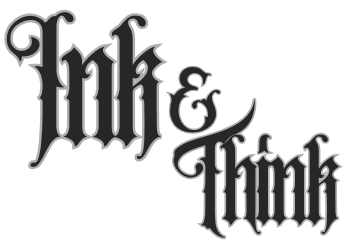Let’s face it—tattoos hurt. There’s just no way around it. When you’re getting thousands of needle pricks depositing ink into your skin, some discomfort is part of the package deal. But here’s the good news: not all spots on your body will leave you gritting your teeth and questioning your life choices!
Whether you’re planning your first tattoo or mapping out your next piece, understanding your body’s pain map can help you make informed decisions about placement. I’ve put together this honest guide to tattoo pain levels across different body parts, with real talk about what to expect when you hit the chair.
How Pain Works During Tattooing
Before we dive into specific body parts, it helps to understand what makes some areas more painful than others:
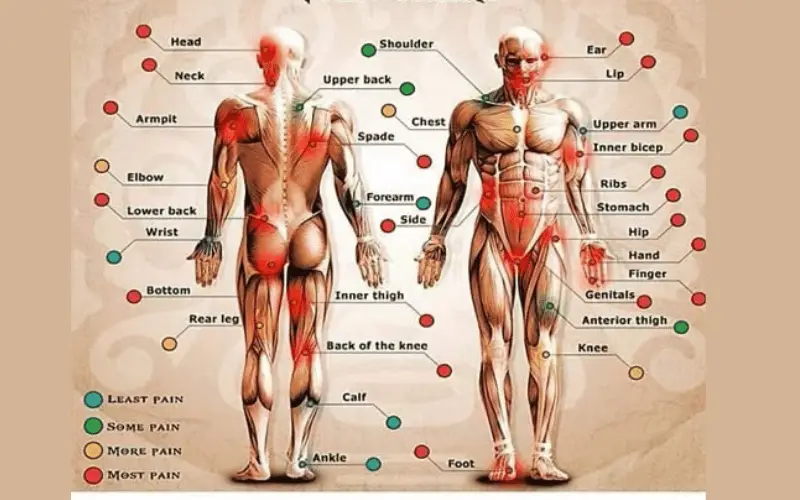
The Science Behind the Ouch
Several factors determine how much a tattoo will hurt in any given spot:
- Nerve concentration – More nerve endings = more pain signals
- Skin thickness – Thinner skin generally means more pain
- Fat cushioning – Areas with less fat typically hurt more
- Bone proximity – Tattoos directly over bone often hurt worse
- Sensitivity to vibration – Some areas react more to the needle’s vibration
- Your personal pain tolerance – We’re all different!
With those factors in mind, let’s map out the body from “mostly manageable” to “might make you swear off tattoos forever.”
The Low-Pain Zone (1-3/10)
These areas typically cause minimal discomfort and are perfect for tattoo newbies:
Outer Upper Arm/Bicep
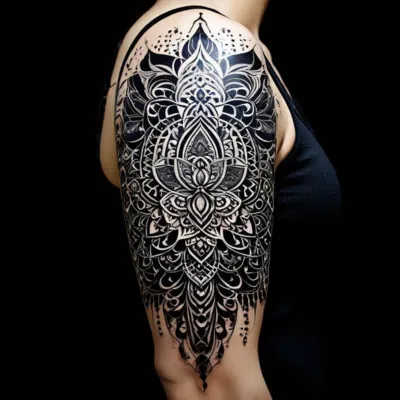
Pain Level: 2/10
With plenty of muscle cushioning and relatively few nerve endings, the outer bicep is tattoo territory on easy mode. Most people describe the sensation here as more annoying than painful—like a cat licking the same spot repeatedly.
Outer Thigh
Pain Level: 2-3/10
The outer thigh’s ample fatty tissue creates natural padding between your skin and bones. With fewer nerve endings than many other body parts, this area can handle larger designs with relatively minimal discomfort. If you’re looking for maximum canvas space with minimum pain, your outer thighs are calling!
Forearms

Pain Level: 3/10
Forearms offer a great balance of visibility and comfort. The outer forearm tends to be less sensitive than the inner forearm, but both sides generally provide a comfortable experience. The skin here isn’t too thin, and there’s decent muscle coverage without too many concentrated nerve bundles.
Upper/Lower Back (Center)
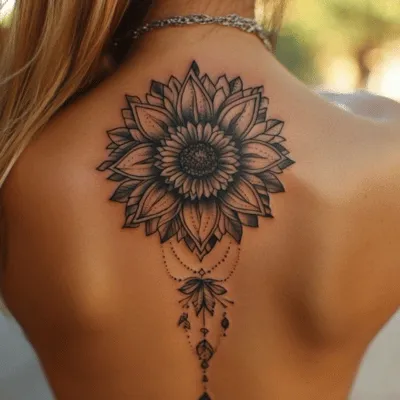
Pain Level: 3/10
The central back area has thicker skin with plenty of muscle underneath, creating a surprisingly comfortable tattoo experience. The main challenge? You can’t see what’s happening, which some people find increases their anxiety.
The Medium-Pain Zone (4-6/10)
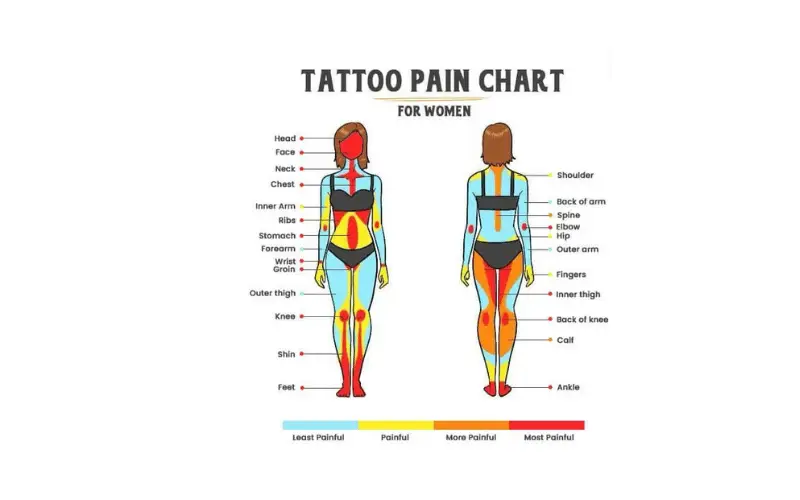
These areas step it up a notch in the discomfort department:
Inner Arm
Pain Level: 4/10
Moving to the softer skin of the inner arm introduces more sensation. While not excruciating, you’ll definitely feel more distinct pain here compared to the outer arm. The skin is thinner, and there are more nerve endings to contend with.
Calf/Inner Thigh
Pain Level: 4-5/10
Your calves have good muscle coverage but more nerve endings than the outer thigh. Meanwhile, inner thighs with their softer skin and proximity to, ahem, sensitive areas, dial up the discomfort a bit more. Still totally doable, but you’ll know you’re getting tattooed!
Ankle/Foot Top
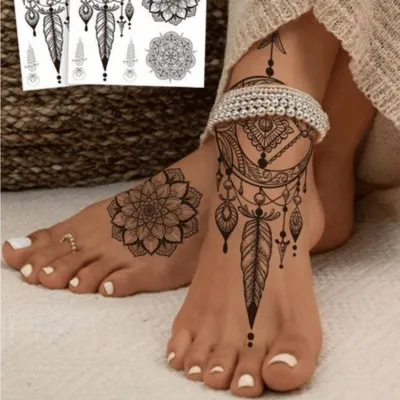
Pain Level: 5-6/10
Now we’re getting serious. With minimal fat, lots of bones, and plenty of nerve endings, ankle and foot tattoos can test your pain tolerance. The tops of feet are particularly spicy—some tattoo artists refuse to work on them because clients tap out so frequently!
Chest/Breast Area
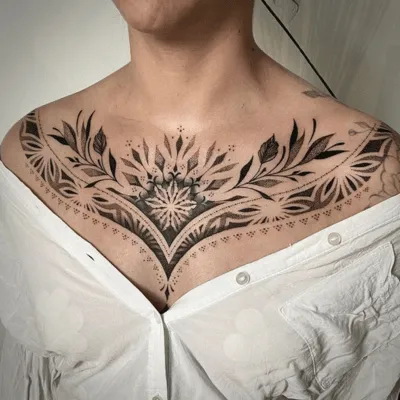
Pain Level: 5-6/10
Pain levels on the chest vary widely depending on your body type and exact placement. Areas with more muscle or fat cushioning hurt less, while work closer to the sternum or collarbone ramps up the intensity. For women, breast tattoos can be particularly sensitive.
Wrist/Hands
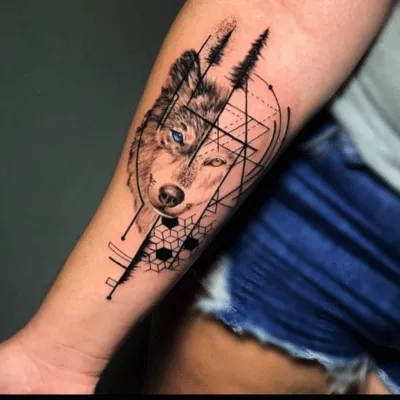
Pain Level: 5-6/10
The thin skin, visible tendons, and numerous bones make wrist and hand tattoos a more intense experience. They’re also prone to fading faster due to frequent washing and sun exposure, sometimes requiring more passes with the needle for solid saturation.
The High-Pain Zone (7-8/10)
Brace yourself—these spots test even experienced tattoo collectors:
Neck/Throat
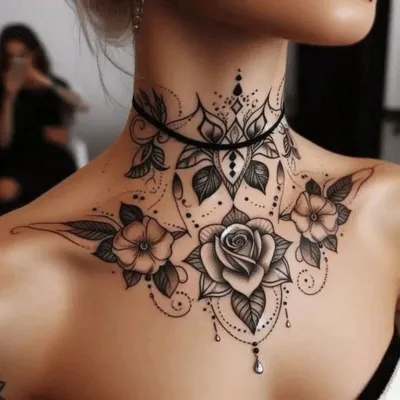
Pain Level: 7/10
Neck tattoos bring both physical discomfort and psychological stress. The sensation of needles near your throat can trigger instinctive anxiety responses. The skin is thin, there’s minimal padding, and the vibration can feel particularly intense in this vulnerable area.
Kneecap/Elbow
Pain Level: 7-8/10
Any bony protrusion with thin skin stretched over it creates prime territory for tattoo pain. Kneecaps and elbows involve the unique experience of feeling vibrations through your entire joint while the needle works. Many people describe this as a deep, resonating discomfort.
Shinbone
Pain Level: 8/10
With practically nothing but a thin layer of skin over bone, the shin provides one of the most consistently painful tattoo experiences. The vibration travels straight through the bone, creating a unique type of discomfort that’s hard to prepare for.
Ribcage/Sides
Pain Level: 8/10
The ribs combine multiple pain factors: thin skin, minimal padding, bone proximity, and constant movement from breathing. Add to this the fact that rib pieces are often larger and require longer sessions, and you’ve got a recipe for a challenging sit.
Spine
Pain Level: 8/10
While the surrounding back area is relatively comfortable, tattooing directly on the spine is a whole different experience. The needle hitting close to your vertebrae creates vibrations that can resonate throughout your body, and the central nervous system location means maximum sensitivity.
The Extreme Pain Zone (9-10/10)
These locations make even the most hardcore tattoo enthusiasts wince:
Armpit
Pain Level: 9/10
The armpit is a perfect storm of tattoo pain: lots of nerve endings, thin skin, and a naturally sensitive area that’s rarely exposed to any kind of discomfort. There’s a reason armpit tattoos are sometimes seen as a badge of honor among the heavily tattooed!
Face/Ears

Pain Level: 9/10
Besides the psychological intensity of having needles near your sensory organs, face tattoos physically hurt due to thin skin and abundant nerve endings. The ears, with their cartilage and minimal padding, create unique and intense sensations.
Palms/Soles
Pain Level: 9-10/10
The most nerve-dense areas of your body also happen to have uniquely structured skin that rejects ink more readily. This means artists often need to go deeper and work harder to achieve results, creating an experience that few would describe as pleasant.
Genital Area
Pain Level: 10/10
I mean… do we need to explain this one? Maximum nerve endings, extremely sensitive tissues, and psychological stress combine to create the ultimate tattoo pain experience. The fact that some people voluntarily get tattooed here is frankly impressive!
Inner Lip/Mouth
Pain Level: 10/10
The mucous membranes inside your mouth contain dense nerve networks that send pain signals loud and clear. Inner lip tattoos are mercifully small by necessity, but they pack maximum sensation into that brief experience.
How Different Tattoo Styles Affect Pain
It’s not just about placement—different tattoo techniques can affect your pain experience:
Linework vs. Shading vs. Color Packing
- Outlining (3-7/10): Often described as the sharpest, most defined pain
- Shading (2-5/10): Usually less intense but can be more irritating over time
- Color packing (4-8/10): Typically the most painful as it requires more needle passes in the same area
Machine Types Matter
- Coil machines tend to cause more vibration and surface trauma
- Rotary machines generally feel smoother and less aggressive
- Hand-poked tattoos (stick and poke) often hurt less but take longer
Factors That Affect Your Personal Pain Experience
Remember that pain charts are just generalizations—your experience might be different based on:
Physical Factors
- Gender – Some studies suggest women have slightly higher pain tolerance for tattoos
- Weight/body composition – More natural padding can reduce pain in some areas
- Skin tone – Darker skin sometimes requires deeper ink deposit, potentially increasing discomfort
- Age – Skin becomes thinner and potentially more sensitive as we age
Mental/Emotional Factors
- Anxiety levels – Being nervous amplifies pain perception
- Sleep quality – Being well-rested improves pain tolerance
- Previous tattoo experience – Knowing what to expect can help you manage the sensation
- Your attachment to the design – Meaningful tattoos often feel less painful psychologically
Pro Tips to Minimize Tattoo Pain
While you can’t eliminate tattoo pain entirely, these strategies can make your session more bearable:
Before Your Appointment
- Stay hydrated for several days before
- Avoid alcohol for at least 24 hours (it thins blood and increases sensitivity)
- Get good sleep the night before
- Eat a substantial meal 1-2 hours before your appointment
- Consider a numbing cream (discuss with your artist first)
During Your Session
- Focus on breathing – Slow, deep breaths help manage pain
- Distraction techniques – Conversation, music, or videos can shift focus
- Take breaks when needed – Most artists are happy to give you a moment if you ask
- Stay warm – Being cold increases sensitivity
- Stay still – Moving prolongs the process and can worsen pain
Session Scheduling Strategy
- Book morning appointments when your energy is highest
- Split larger pieces into multiple sessions
- Start with less painful areas first to build confidence
The Truth About Numbing Products
Many people ask about numbing options:
Types of Numbing Products
- Topical creams (lidocaine-based) – Applied before the session
- Numbing sprays – Used during the session for temporary relief
- Pain management devices – Vibration-based tools that confuse pain receptors
Important Caveats
- Always discuss with your artist beforehand—some prefer not to work with numbing products
- Effects are temporary (1-2 hours typically)
- Results vary widely between individuals
- May affect how ink sets in some cases
Will Pain Level Affect How My Tattoo Heals?
More painful areas sometimes present additional healing challenges:
- Movement-heavy areas (joints, neck) often take longer to heal
- High-friction zones require more careful aftercare
- Areas prone to swelling (ankles, hands) may need extra attention
Remember: Pain is Temporary, Tattoos are (Mostly) Forever
When considering placement, balance these factors:
- Pain tolerance – Be honest with yourself
- Design requirements – Some pieces work best in specific spots
- Visibility preferences – Consider how public you want your tattoo to be
- Aging factors – Some areas hold ink better over time
At the end of the day, tattoo pain is part of the experience—a temporary discomfort for permanent art. Many collectors find that the most painful pieces hold special significance precisely because they required enduring something challenging.
Whether you choose to start in the low-pain zone or dive straight into the deep end, knowing what to expect helps you prepare mentally and physically for your tattoo journey. And remember—even the most heavily tattooed people started with their first piece!
What’s been your experience with tattoo pain? Do you have any spots that hurt more or less than expected? Share your story in the comments!
